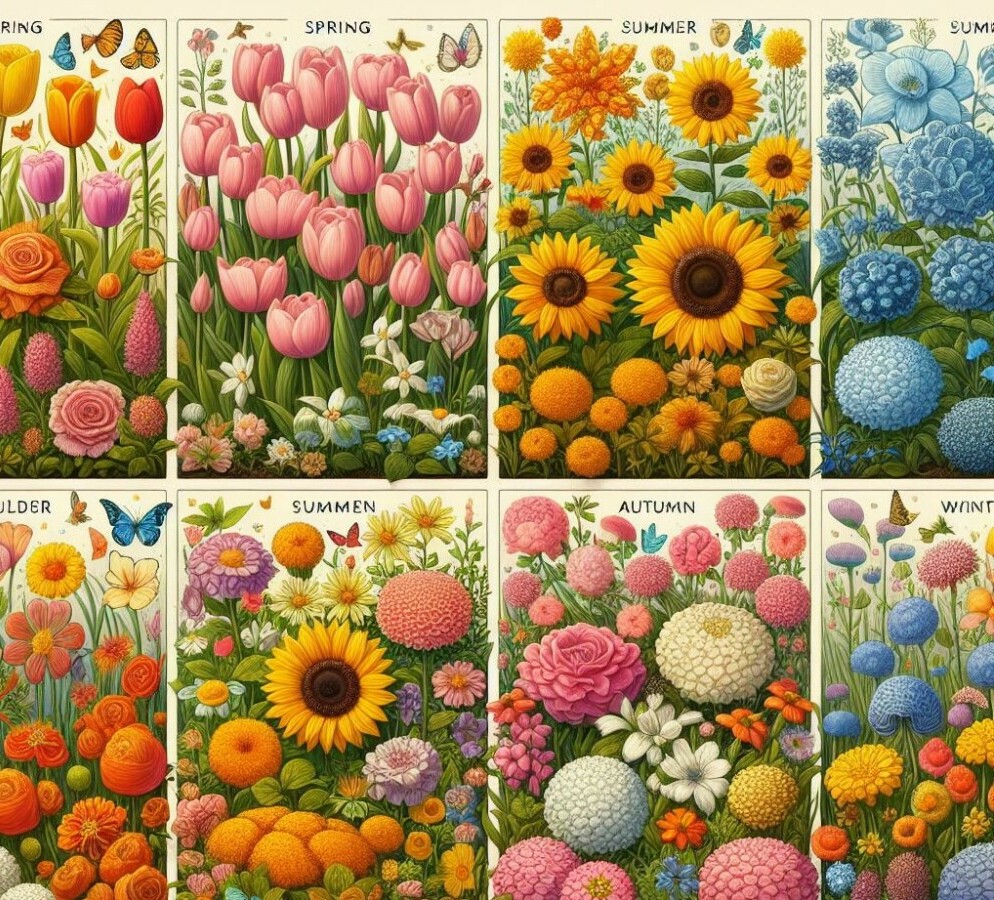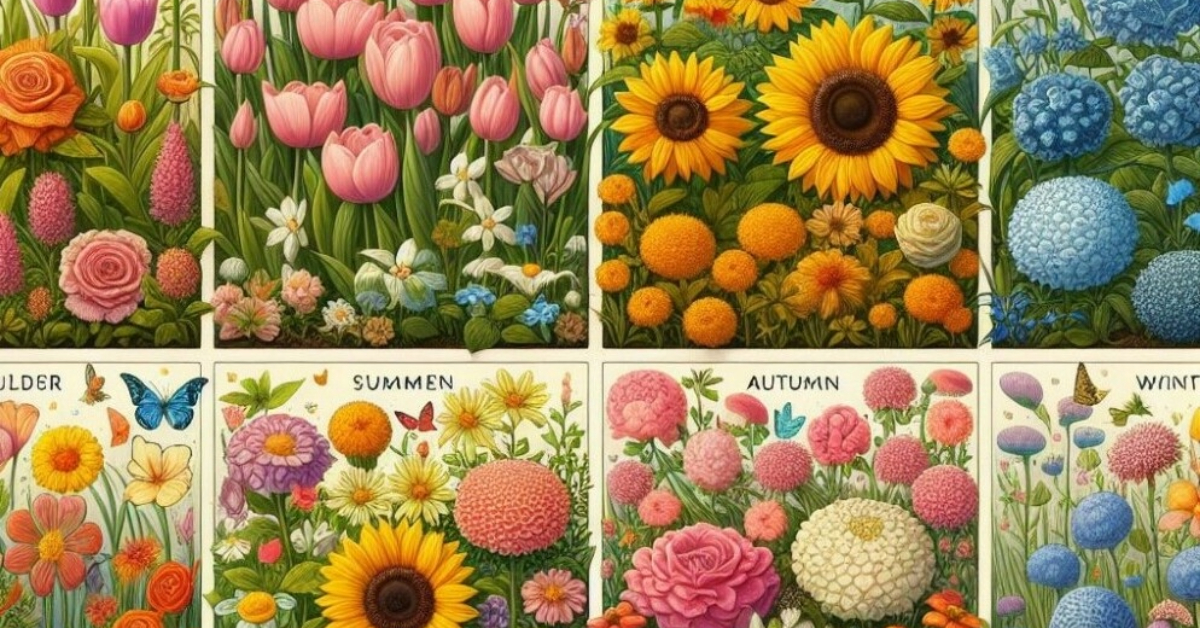
I will kick things off by talking about the burst of life that comes with spring. You can almost feel the energy as nature restarts its cycle. It’s not just a great time to enjoy the outdoors; it’s also the perfect moment to plant those early bloomers in your garden.
That will include an array of vibrant flowers, but let’s zero in on a few superstars like tulips, daffodils, and pansies. These aren’t just any flowers; they are spring’s heralds, waking up your garden with their vivid colors and bold presence.
You’ll learn why these specific flowers are suited to spring weather. For instance, tulips and daffodils benefit from the winter’s chilling period, bursting forth in spring with a riot of color. Pansies, with their ability to endure a light frost, bring charm and durability to spring’s unpredictable weather.
Now, let’s talk about getting them in the soil. Timing is crucial; planting too early or too late can impact their success. I’ll give you some practical advice on the best practices for spring planting and how to care for these beauties as they grow.
One of the joys of gardening is watching these spring bloomers push through the last of the winter chill to herald the new season. And as the weather shifts, your garden planning doesn’t stop there. As spring unfolds and we head into the warmth of summer, it’s time to think about heat-loving plants.
Summer Colors: Flowers That Thrive in the Heat
As the days get longer and temperatures rise, it’s time to think about which flowers can survive and flourish in the summer heat. I’m talking about blossoms that can stand up to those sweltering days and still put on a show in your garden. Here’s a selection of tailor-made flowers for the summer season.

Petunias are a classic choice, and for good reason. They come in a kaleidoscope of colors and can bloom continuously throughout summer. Daylilies are another powerhouse, with their ability to produce many flowers even in the hottest months. And don’t overlook coneflowers; these tough perennials bring a vibrant array of pinks and purples to the table and attract beneficial pollinators.
Now, summer gardening isn’t just about choosing the right flowers. It’s also about adopting intelligent strategies to protect your plants from the intensity of the sun and the threat of pests. Consider mulching to retain soil moisture and selecting locations that balance sun and shade. And remember, a consistent watering schedule in the morning or evening hours can make a massive difference in helping your flowers thrive.
Managing the soil is another crucial aspect of successful summer gardening. A well-draining mix helps prevent overwatering issues, which summer storms can exacerbate. Fertilizing should be approached with care—too much can burn your plants, especially when the heat already stresses them.
Incorporating these summer bloomers and following these care tips will create a stunning garden during the warmest months and invite butterflies, bees, and birds. This isn’t just about aesthetics; it’s about building a healthy, lively ecosystem right in your backyard.
Transitioning smoothly into autumn, it’s essential to recognize that plants’ care and selection must adapt as days shorten and conditions change. But that’s a story for the next section, where we delve into the rich hues and special considerations that come with gardening as the air turns crisp and the leaves begin to fall.
Autumn Hues: Preparing for the Harvest Season
When the air gets crisper and the leaves start to turn, it’s a clear signal to get your garden ready for autumn. This season isn’t just about pumpkins and harvest festivals; it’s a fantastic time to enjoy fall flowers’ rich, warm colors. Setting the stage for these blooms requires a bit of preparation to ensure your garden continues to thrive.
Chrysanthemums are often the stars of the show come autumn. With their diverse colors and hardiness, these perennials can bring much-needed vibrancy as the days grow shorter. With their surprising late-season blossoms, autumn crocuses peeking out amid fallen leaves provide a delicate contrast. Then there’s the Japanese anemone, offering a subtle beauty that can light up any garden.
Choosing the suitable soil and preparing your garden beds are crucial for these autumn gems to take root. Well-draining soil enriched with compost provides a strong foundation. Consider the location carefully; while some plants, like chrysanthemums, can handle a bit of chill, others might prefer a spot that still catches the fading warm rays of the sun.
Extending the blooming season is like stealing time from winter. Deadheading spent flowers and providing a steady water supply can encourage new growth. Also, a layer of mulch can protect against the early frosts that threaten your delicate autumn plants.
Your garden’s look will also evolve during autumn. Integrating flowers like mums and autumn crocus among the fading greenery can create striking contrasts. Consider planting in groups to amplify their impact and ensure a visually compelling display that captures the essence of autumn.
Winter Wonders: Selecting Flowers for the Chill
Gardening isn’t just a fair-weather hobby; it’s a year-round commitment that rewards the diligent and the patient. Winter might present challenges with its biting cold and frosts, but it also offers unique opportunities to showcase resilient blooms that can enliven even the bleakest landscapes.
Key to success in the winter garden are flowers like sturdy hellebores, which can bloom even in the snow, bright winter jasmine, which adds a splash of cheer, and, surprisingly, pansies, which make a second appearance with their cold-tolerant blossoms. These plants are not only hardy; they can transform your garden into a place of wonder during the dormant months.
It’s critical to employ mulching and frost protection techniques to protect these precious blooms. These strategies shield the roots from freezing temperatures and provide essential nutrients as organic mulches break down.
Integrating evergreens and plants with winter interest can elevate your garden, too. They serve as a backdrop that makes the colors of winter flowers pop and ensures that your garden retains structure and appeal even when the mercury dips.
In wrapping up, I hope this exploration of seasonal blooms has inspired you to plan your garden with the entire year in mind. From the fresh promise of spring to the quiet magic of winter, each season holds potential for beauty and growth. Remember, your first winter garden doesn’t need to be perfect. It’s a learning experience, a chance to adjust and refine as you go. So choose flowers that resonate with you, and create a garden that brings color and joy to every season.

